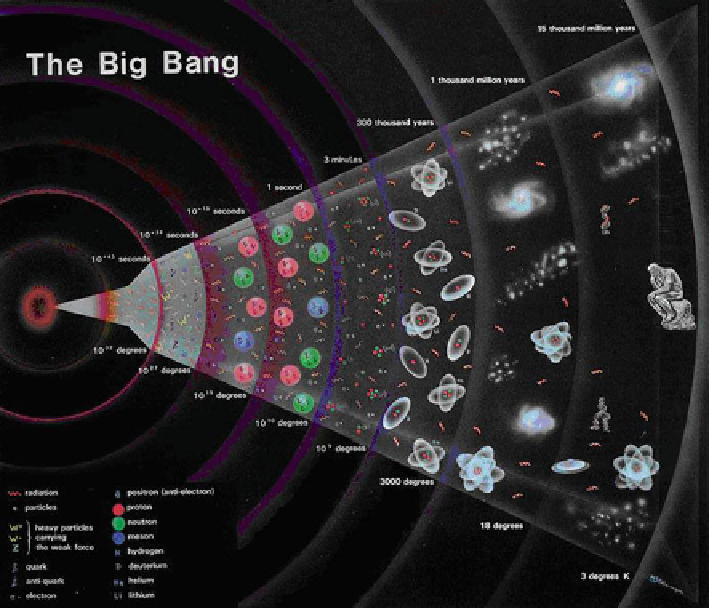Biology Reference
In-Depth Information
characterize normal vs. cancer cells but the dynamic patterns (e.g., fluctuating
levels of ions maintained as the balance between the input through the gap junctions
on one part of a given cell and the output through the gap junctions on another part
of the same cell) that differentiates the intercellular messages being exchanged
between normal cells, between normal and cancer cells, and between cancer cells.
15.10 Symmetry Breakings in Morphogenesis
and Cosmogenesis
There may be an interesting analogy between the Big Bang theory in cosmology
and the developmental biology including morphogenesis. In both cases, relatively
homogeneous (i.e., symmetric or disordered) (Landau and Lifshitz 1990) initial
states are transformed into heterogeneous (i.e., asymmetric or ordered) states as a
function of time (see Figs.
15.1
and
15.12
and Table
15.8
). In other words, in both
Fig. 15.12 The evolution (or morphogenesis) of the Universe. The initially
homogenous
(sym-
metric) mixture of electrons, quarks, gluons, and other particles becomes heterogeneous with time.
The
geometric symmetry
(or homogeneity) of the Universe is continuously broken from the
left
to
the
right
. After about 13.7 billion years, the Universe contains a
heterogeneous
(symmetry-
broken) mixture of galaxies, stars, planets, and other objects (Reproduced from J. Gillies 2007)

